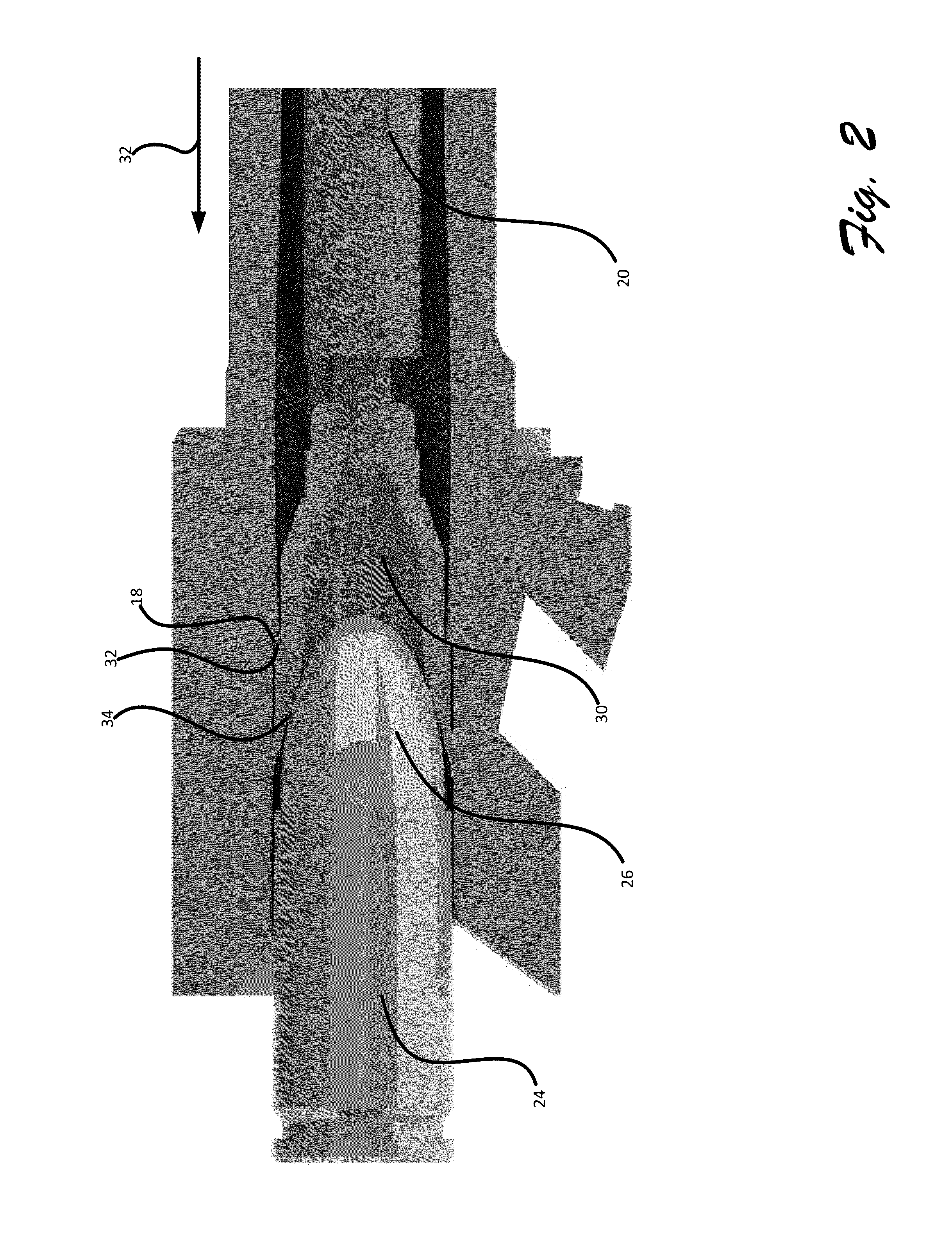Firearm safety and chamber block indicator
- Summary
- Abstract
- Description
- Claims
- Application Information
AI Technical Summary
Benefits of technology
Problems solved by technology
Method used
Image
Examples
Embodiment Construction
[0031]Referring to FIG. 1, barrel 10 including the muzzle 12, barrel 16 and chamber 14 is shown. A case stop 18 is included in the chamber that, in normal operation, has a smaller diameter than the chamber allowing the leading edge of the case stop abut the casing of a cartridge when the cartridge is in the chamber and the firearm is in battery. When the invention is in operation a ridge defined in the chamber block engages the case stop. In one embodiment, a leading edge is included in the ridge for engaging the case stop. The bullet is received into the barrel where the land and groves are located.
[0032]The current invention includes a visual indicator 20 that can be received in the barrel from the breach / chamber end and extend past the muzzle so that it is visible outside the barrel thereby indicating a safe condition for the firearm. The visual indicator is connected to the chamber block 22. When the chamber block is inserted into the chamber, the visual indicator extends out of...
PUM
 Login to View More
Login to View More Abstract
Description
Claims
Application Information
 Login to View More
Login to View More - R&D
- Intellectual Property
- Life Sciences
- Materials
- Tech Scout
- Unparalleled Data Quality
- Higher Quality Content
- 60% Fewer Hallucinations
Browse by: Latest US Patents, China's latest patents, Technical Efficacy Thesaurus, Application Domain, Technology Topic, Popular Technical Reports.
© 2025 PatSnap. All rights reserved.Legal|Privacy policy|Modern Slavery Act Transparency Statement|Sitemap|About US| Contact US: help@patsnap.com



